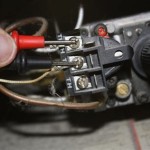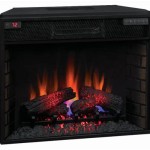Outdoor Stacked Stone Fireplace Ideas For Home Office Design Plans
The integration of an outdoor fireplace into a home office design plan presents a unique opportunity to create a workspace that is both functional and aesthetically pleasing. A stacked stone fireplace, in particular, offers a rustic and sophisticated charm that can transform a mundane office environment into an inspiring and relaxing retreat. This article explores various ideas for incorporating an outdoor stacked stone fireplace into home office design plans, considering aesthetic considerations, functional aspects, and practical implementation strategies.
The concept of a home office has evolved significantly in recent years. No longer confined to cramped, indoor spaces, the modern home office seeks to embrace the outdoors, blurring the lines between work and leisure. An outdoor office allows for increased exposure to natural light, fresh air, and the calming elements of nature, which can contribute to improved productivity, creativity, and overall well-being. Integrating a stacked stone fireplace into this setting elevates the experience further, providing a focal point that is both visually stunning and functionally beneficial. Before delving into specific design ideas, it's crucial to understand the key considerations impacting the suitability and success of an outdoor fireplace integration.
Firstly, assessing the existing landscape is paramount. The surrounding environment dictates the style, size, and placement of the fireplace. A sprawling backyard might accommodate a large, imposing structure, while a smaller patio may require a more compact and streamlined design. Soil stability and drainage are also critical factors, especially when constructing a heavy stacked stone fireplace. Proper excavation and foundation work are essential to prevent settling or structural issues over time.
Secondly, local building codes and regulations must be strictly adhered to. Fire safety is of utmost importance, and municipalities typically have specific guidelines regarding fireplace construction, clearances from flammable materials, and chimney height. Obtaining the necessary permits before commencing any construction work is essential to avoid costly delays or potential legal complications.
Thirdly, the intended use of the outdoor office and fireplace should inform the design choices. Is the space primarily for focused work, relaxation, or entertaining? The fireplace can be designed to serve multiple purposes, such as providing warmth during cooler months, creating a cozy ambiance for evening meetings, or serving as a backdrop for social gatherings. The size, style, and features of the fireplace should align with these intended uses.
Aesthetic Considerations for Stacked Stone Fireplace Design
The aesthetic appeal of a stacked stone fireplace is largely determined by the type of stone used, the arrangement of the stones, and the overall design style. The choice of stone is crucial in achieving the desired look and feel. Natural stones, such as granite, limestone, and slate, offer unique textures and colors that can complement the surrounding landscape and architecture. Manufactured stones provide a more uniform appearance and are often more affordable, but may lack the natural variations and character of real stone.
The arrangement of the stones can significantly impact the visual impact of the fireplace. A dry-stacked arrangement, where the stones are fitted together without mortar, creates a rustic and natural look. A mortared arrangement, on the other hand, provides a more polished and refined appearance. The size and shape of the stones can also be varied to create different patterns and textures. For example, using larger, irregularly shaped stones can create a more dramatic and rugged look, while smaller, more uniform stones can create a more subtle and elegant effect.
The overall design style of the fireplace should be consistent with the architectural style of the house and the surrounding landscape. A modern home might benefit from a sleek and minimalist fireplace with clean lines and a simple stone arrangement. A traditional home might be better suited for a more ornate fireplace with decorative features and a more elaborate stone arrangement. The surrounding landscaping should also complement the fireplace, with plants, trees, and other features that enhance its visual appeal.
Consider integrating built-in seating around the fireplace. This creates a cohesive and inviting space for relaxation and conversation. Stone benches or wooden benches with cushions can provide comfortable seating options. Adding outdoor lighting, such as string lights or spotlights, can enhance the ambiance and extend the usability of the space into the evening hours.
Functional Aspects of Outdoor Fireplace Integration
Beyond aesthetics, the functional aspects of an outdoor fireplace are equally important. The fireplace should be designed to provide adequate heat and light, while also being safe and easy to use. The size of the fireplace should be proportional to the size of the outdoor office space. A larger fireplace will provide more heat, but it may also be more difficult to manage and may overwhelm a smaller space. A smaller fireplace may be easier to manage, but it may not provide enough heat for larger gatherings.
The type of fuel used for the fireplace is another important consideration. Wood-burning fireplaces offer a traditional and authentic experience, but they also require more maintenance and may be subject to local air quality regulations. Gas fireplaces are more convenient and easier to control, but they may not provide the same level of warmth and ambiance as wood-burning fireplaces. Electric fireplaces are the most convenient option, but they may not be suitable for all outdoor environments.
The placement of the fireplace should be carefully considered to maximize its functionality. The fireplace should be located in a sheltered area, away from strong winds, to ensure that the heat is not dispersed. It should also be located in a convenient location, easily accessible from both the home and the outdoor office space. Consider the prevailing wind direction when positioning the fireplace to minimize smoke blowing into the work area.
Incorporate storage solutions for firewood or propane tanks, depending on the fuel source. Built-in storage can be seamlessly integrated into the fireplace design, maintaining a clean and organized appearance. Ensure that the storage area is easily accessible and protected from the elements.
Practical Implementation Strategies for Outdoor Fireplace Projects
Implementing an outdoor stacked stone fireplace project requires careful planning and execution. The first step is to create a detailed design plan that includes the dimensions of the fireplace, the type of stone to be used, and the overall layout of the outdoor office space. The design plan should also include any necessary structural drawings and specifications.
The second step is to obtain the necessary permits from the local municipality. This may involve submitting the design plan for review and inspection. It is important to be familiar with all local building codes and regulations before commencing any construction work.
The third step is to prepare the site for construction. This may involve excavating the area where the fireplace will be located, installing a foundation, and running any necessary gas or electrical lines. The foundation should be level and stable to prevent settling or structural issues over time.
The fourth step is to construct the fireplace. This may involve hiring a professional mason or contractor. If you are undertaking the project yourself, be sure to follow the design plan carefully and use high-quality materials. Stack the stones securely and ensure that the mortar is properly applied.
The fifth step is to install any necessary accessories, such as a chimney cap, a spark arrestor, or a gas log set. These accessories can enhance the functionality and safety of the fireplace.
The final step is to landscape the surrounding area. This may involve planting trees, shrubs, and flowers that complement the fireplace. Consider adding outdoor furniture and lighting to create a comfortable and inviting space.
When hiring a contractor, verify their credentials and experience in building outdoor fireplaces. Request references from previous clients and review their portfolio of completed projects. Obtain multiple bids to ensure you are getting a fair price.
Consider incorporating sustainable design principles into the project. Use locally sourced materials to reduce transportation costs and environmental impact. Incorporate rainwater harvesting systems to irrigate the surrounding landscape. Use energy-efficient lighting and appliances to minimize energy consumption.
Regular maintenance is essential to keep the outdoor fireplace in good condition. Clean the fireplace regularly to remove soot and debris. Inspect the stones and mortar for any signs of damage and make repairs as needed. Have the chimney inspected annually to ensure that it is free of obstructions.
Integrating an outdoor stacked stone fireplace into a home office design plan can create a unique and inspiring workspace. By carefully considering the aesthetic considerations, functional aspects, and practical implementation strategies outlined in this article, homeowners can transform their outdoor space into a tranquil and productive environment.

17 Modern Stacked Stone Fireplace Ideas For Your Home

17 Modern Stacked Stone Fireplace Ideas For Your Home

4 Natural Stacked Stone Fireplaces For Your Dream Design

17 Modern Stacked Stone Fireplace Ideas For Your Home

17 Modern Stacked Stone Fireplace Ideas For Your Home

40 Stone Fireplace Designs From Classic To Contemporary Spaces Decoist

17 Modern Stacked Stone Fireplace Ideas For Your Home

B S Diy Stacked Stone Fireplace Surround Genstone

17 Modern Stacked Stone Fireplace Ideas For Your Home

50 Fireplace Ideas For A Warm And Cozy Home In 2025
Related Posts








